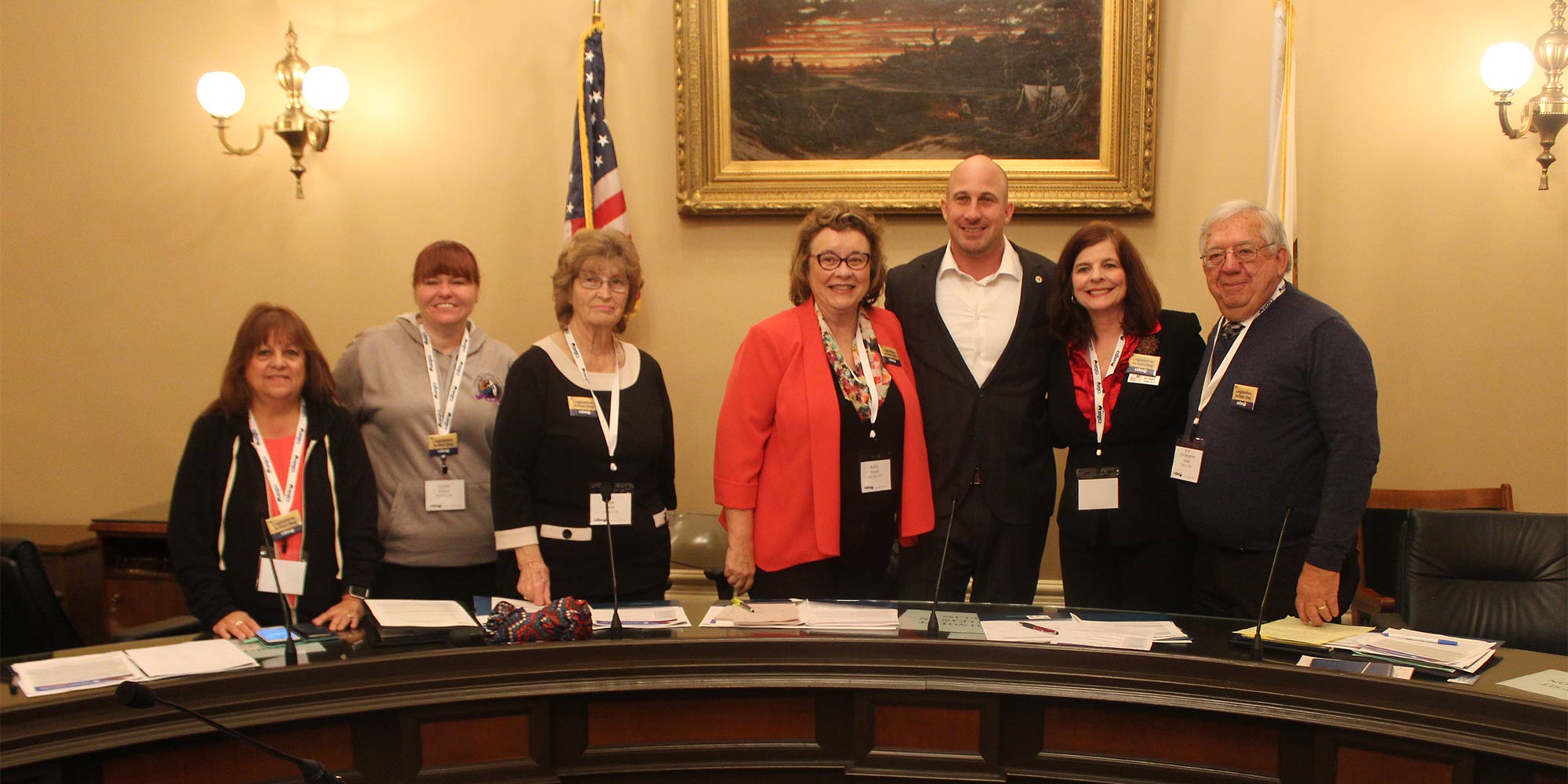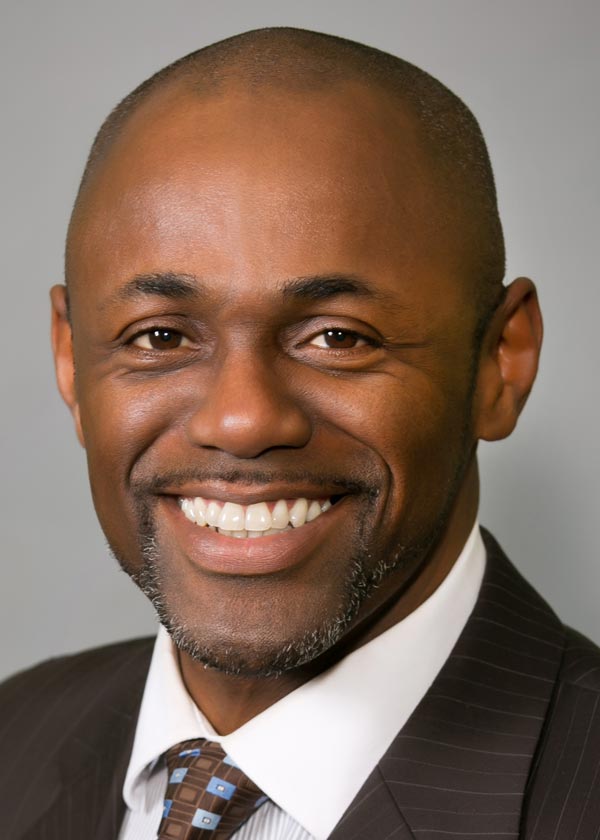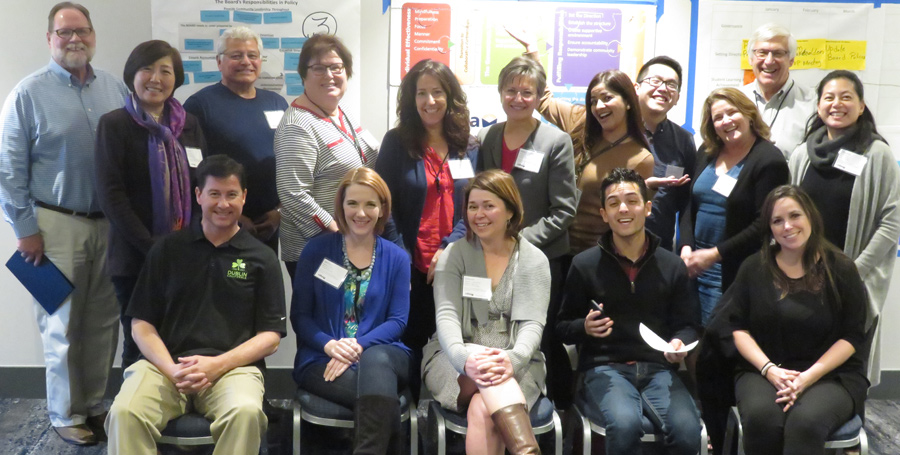

Districts large and small cited the full and fair funding of public schools as the number one issue on their docket. “Our top priority today is to speak with our legislators about the effects of the budget and the issues it creates for our children,” said Ann Phillips, a trustee from the Lawndale Elementary School District. “The lack of funding is a huge issue. We are fighting for every nickel we can get.”
- Visit www.csba.org/Newsroom for links to digital versions of current and past issues of California School News.

Partovi, Code.org’s CEO, is best known for starting the internationally recognized “Hour of Code” movement. Under his leadership more than 100 million students from around the world have become familiar with basic coding, resulting in schools around the globe establishing computer science classes. In the United States, 25 percent of students have been reached. Code.org’s mission is to expand access to computer science in all schools and increase participation by women and underrepresented minorities. Look for an in-depth interview with Partovi about his views on computer science education in the spring issue of California Schools magazine.

Troy Flint | tflint@csba.org
Managing Editor:
Kimberly Sellery | ksellery@csba.org
Marketing Director:
Serina Pruitt | spruitt@csba.org
Staff Writers and Contributors:
Hugh Biggar | hbiggar@csba.org
Aaron Davis | adavis@csba.org
Mike Ambrose | mambrose@csba.org
Andrew Cummins | acummins@csba.org
Graphic Design Manager:
Kerry Macklin | kmacklin@csba.org
Senior Graphic Designer:
Carmen Rodriguez | crodriguez@csba.org
Mike Walsh | Butte COE
President-elect:
Emma Turner | La Mesa-Spring Valley SD
Vice President:
Xilonin Cruz-Gonzalez | Azusa USD
Immediate Past President:
Susan Henry | Huntington Beach Union HSD
CEO & Executive Director:
Vernon M. Billy
Send address changes to California School News, 3251 Beacon Blvd., West Sacramento, CA 95691.
News and feature items submitted for publication are edited for style and space as necessary.


What I believe made the day the most powerful was the unified message we presented — one that any legislator would be hard-pressed to truthfully deny. That critical message is that our state legislature needs to take action towards Full and Fair Funding. Full and fair funding means that funding has to meet the needs of counties and districts, not just meet the minimum requirement of their obligations. This past January, as the Governor unveiled his final budget proposal, he made it very clear that he was proud of his efforts to meet the funding targets for education and the Local Control Funding Formula. While I absolutely appreciate the Governor’s efforts to bring funding back to pre-recession levels when adjusted for inflation, this is no time for board members to rest or celebrate.


- Kay Coskey, Burlingame ESD
- William Jager, Fruitvale ESD
- Sophia Kao, Saratoga Union ESD
- Sharan Kaur, New Haven USD
- Stephanie Kent, Rescue Union ESD
- Clayton Koo, Delegate, Region 5B, Jefferson ESD
- Lange Luntao, Stockton USD
- Celeste Monnette, Benicia USD
- Gary Munoz, Los Banos USD
- Bethany Smith, Fairfield-Suisun USD
- Marilyn Stewart, San Lorenzo USD
- Deborah Tracy-Proulx, Delegate, Region 9A, Santa Cruz City Schools
- Florence Wong, Board President, Burlingame ESD
Since its inception in 1998, more than 3,000 board members and superintendents have participated in the highly acclaimed certification program. To receive the Masters in Governance certificate, candidates must complete 35 hours of intensive training on the role of the governance team in setting the direction of the district, student learning and achievement, school finance, human resources, policy and judicial review, collective bargaining, and community relations and advocacy.
“This certificate symbolizes deep commitment to professional development in the service of public school students,” said CSBA President and MIG graduate Mike Walsh. “The Masters in Governance program provides education leaders with the knowledge and tools needed to govern effectively. The skills acquired through MIG are critically important as board members and superintendents navigate the increasingly complex landscape of public education. I applaud these graduates for modeling the virtue of continuing education and for refining the practices needed to strengthen schools and support student growth and achievement.”

Additionally, depending on the subject area, it can also be fertile ground for robust board conversation and community input. CSBA Sample Board Policy 6161 provides guidance on this topic and process. Boards should consider the following questions to ensure that the process of materials selection and evaluation reflects the interests of the community as a whole — a vital step on the road to materials adoption.
- Do we have a sufficient level of diversity and representation on our advisory committee?
- Did the pilot process adequately represent the range of schools that would be impacted? Did the process gather input from teachers, students and parents?
- What did the students who will be impacted say about the materials?
- What were the comments from the teachers who were asked to pilot the materials?
- Based on the pilot experience, what types of teacher support will be required to successfully implement the instructional materials? What strengths and challenges can be anticipated?
- How is the plan for implementation supported by current district technology infrastructure? How is it aligned with plans for future technology needs,
and professional development and support for teachers? - What is the ultimate recommendation of the advisory committee?
legislative
“CSBA is very excited to co-sponsor this bill, and we certainly appreciate Assemblymember Muratsuchi’s leadership on bringing a much-needed increase to LCFF targets,” said CSBA President Mike Walsh. “This bill is an important step in moving California toward the national average in per-pupil funding and aligns with CSBA’s ultimate goal of full and fair funding for education.”
A CSBA Leader:
- Communicates effectively on behalf of public education and advocates CSBA’s vision, mission and governance structure.
- Understands, articulates and influences the legislature’s impact on public education.
- Advocates for the diverse needs of all students throughout the State.
- Engages and strengthens the power and voices of local governance teams.
- Demonstrates high standards of ethics and integrity.
- Leads successfully in the face of change.
- Provides evidence of leadership skills to lead with experience, knowledge and innovation.
- Commits the time, attention and energy necessary to serve as a CSBA officer.
Potential candidates must:
- Serve on a school district or county board that is a member of CSBA.
- Have completed two years as a member of the Delegate Assembly and four years as a board member on a member board.
- Submit a minimum of three (3) Nomination Forms for 2019 CSBA Officers. Nominations may be made by either a school or county board that is a member of CSBA, or by an individual member of a CSBA member board.
Nomination forms must be received by CSBA no later than Friday, June 1.
Those candidates who have received three (3) separate nomination forms will have until Monday, July 9, to submit a formal Declaration of Candidacy packet. Interviews are scheduled for Saturday, September, 15, 2018. The Delegate Assembly will elect the officers at its meeting in San Francisco on November 29.

The following excerpt, from CSBA’s GAMUT Board Policy 9000, is probably found in some form or another in all of your board policies: “Provide community leadership on educational issues and advocate on behalf of students and public education at the local, state and federal levels.” Maximizing the potential impact of your position as a board member requires you to advocate on behalf of all the students you represent — this is true within your counties, in Sacramento and in Washington, D.C.
- California has 58 county offices of education; each is governed by a county board
- 334 county board members are elected; seven are appointed
- 53 county superintendents are elected; five are appointed
- In four charter counties — Sacramento, San Diego, San Francisco and Santa Clara — the county superintendent is appointed by the county board of education. In Los Angeles, the county board of supervisors appoints the county superintendent of schools and the county board of education.
- There are seven single-district counties in California: Alpine, Amador, Del Norte, Mariposa, Plumas, San Francisco and Sierra.
- Approving COE Local Control and Accountability Plans
- Adopting and monitoring COE budgets
- Setting the salary of the county superintendent
- Appellate body for student expulsions and interdistrict transfers
- Taking action on charter school petitions and appeals
- Providing community leadership on educational issues and advocating on behalf of students and public education at the local, state and federal levels
- Special education services
- Foster youth services
- Adopting courses of study for COE programs including juvenile court schools, community schools, and Regional Occupational Centers and Programs, which provide high school students aged 16 and older with career and technical education
- Direct services to school districts
- Fiscal oversight of school districts
- Approving COE Local Control and Accountability Plans
- Adopting and monitoring COE budgets
- Setting the salary of the county superintendent
- Appellate body for student expulsions and interdistrict transfers
- Taking action on charter school petitions and appeals
- Providing community leadership on educational issues and advocating on behalf of students and public education at the local, state and federal levels
- Special education services
- Foster youth services
- Adopting courses of study for COE programs including juvenile court schools, community schools, and Regional Occupational Centers and Programs, which provide high school students aged 16 and older with career and technical education
- Direct services to school districts
- Fiscal oversight of school districts

Alongside Principal Roxanna Villasenor, Assistant Principal Jaime Avelar and Washington USD Superintendent Linda C. Luna, Billy toured the school, engaged with students and parents and learned how the elementary school is meeting its LCAP goals.
awards
“As Charter Schools Grow, New Challenges Emerge” (Winter 2016), by Manuel Buenrostro, examined the expansion of charter schools in California since the passage of the Charter Schools Act in 1992 and the challenges for effective oversight amidst the many competing priorities facing public school districts and their school boards.
“Special and Equal” (Spring 2017), by Troy Flint, delved into the current state of special education in California and laid out an inclusive vision for educating students with disabilities.

CASchoolsMagazine.
CASchoolsMagazine.
In order to help school districts and county offices of education comply with the law and fulfill their obligations to their staff and community, CSBA updated its sample board policy and administrative regulation 4119.11/4219.11/4319.11 – Sexual Harassment in March 2018. The revised policy strengthens the district’s prohibition against sexual harassment, including harassment based on the victim’s gender, gender identity, gender expression or sexual orientation. The samples also reflect Senate Bill 396, which requires districts to post a DFEH poster on transgender rights in a prominent location, and if the district has 50 or more employees, to provide training to supervisors pertaining to harassment based on gender identity, gender expression and sexual orientation. Sample complaint procedures are provided in BP/AR 4030 – Nondiscrimination in Employment.
2018 CSBA Training for Executive Assistants
MIG Course 5
2018 CSBA Training for Executive Assistants
2018 The Brown Act
Leadership Institute





